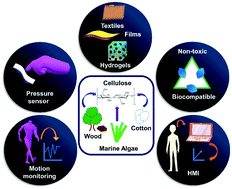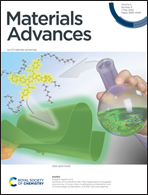Cellulose based flexible and wearable sensors for health monitoring
Abstract
Recently, with the advancement of materials science and manufacturing methods, researchers have introduced many new and advanced materials for wearable sensors. In particular, incredible advancement has been made in flexible strain sensors for their application in wearable health monitoring, soft-robotics, human–machine interactions (HMI), and so forth. Cellulose, the most abundant natural biopolymer, is one of the most viable substrates for strain and pressure sensors, mainly due to its biocompatibility and biodegradability along with many other useful features. Cellulose is available in various forms including fibers, nanocrystals, and nanofibers, and different techniques are used to fabricate these into hydrogels, aerogels, films, paper, fabrics, and eventually into sensors. An overview of the fabrication, sensing performance, and applications of cellulose-based flexible physiological sensors has been presented in this review, along with their use in monitoring healthcare activities through different types of strain sensors, pressure sensors and HMIs. It is observed that an appropriate selection of the substrate and functional materials greatly influence the sensing characteristics of these sensors, such as sensitivity, response time, effective strain range, stability under strain/pressure, and hysteresis. The potential for further research on this subject has also been highlighted, along with the recent trends in using flexible sensors for health-monitoring.

- This article is part of the themed collection: Recent Review Articles


 Please wait while we load your content...
Please wait while we load your content...